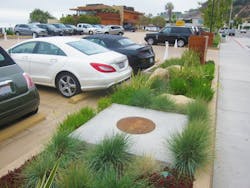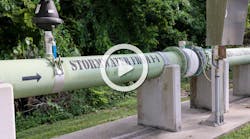California Restaurant Addresses Pollutants with Biofilters
Bio Clean Environmental Services
www.biocleanenvironmental.com • 855.566.3938
Overlooking one of California’s most famous beaches, Nobu is a model for contemporary restaurant design, service and cuisine. Although Nobu is now an operating success, Malibu’s marquee restaurant developers had some unique challenges to address.
Goals
On California’s coast, the densely populated county of Los Angeles produces many hazards that enter our storm drains every day. This Nobu property is no different and pointedly positioned to help address these hazards, protecting the very resource that provides them with quality fish. Beyond environmental concerns, Nobu’s property has limited space, so it was a priority to maximize every square foot and conserve millions in real estate.
Solution
The Malibu site integrated two Modular Wetlands Linear units, a biofilter that is uniquely designed to save land and replicate natural processes, removing a variety of pollutants from runoff. Such pollutants include TSS, bacteria, oils, plastics, heavy metals and harmful nutrients like nitrate and phosphorus, which overwhelm oxygen levels and devastate fish populations. Given the value of the coastal real estate, Nobu had an enormous incentive to maximize land usage. Above ground bioretention systems have a singular surface area, typically occupying an average of 1,795 square feet (per impervious acre). In comparison, the Modular Wetlands is submerged, taking up a mere 63 square feet. Applying these estimates to the Nobu site, the twin Modular Wetlands saved roughly 3,464 square feet, representing around $3 million dollars, plus returns on parking revenue.
Conclusion
Today, Nobu shares the atmosphere it set out to protect. The Modular Wetlands biofiltration systems save land while beautifying the landscaped areas and actively contributing to the shared mission by addressing pollutants, such as TSS, nitrates, phosphorus, oils, trash and plastics from reaching the Pacific Ocean.


